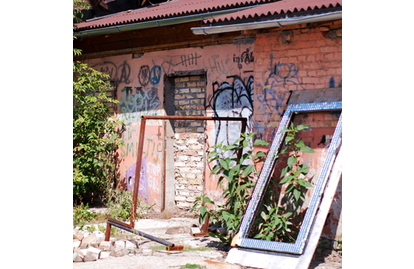BECOSI
Benchmarking on contaminated sites
- Thematic cluster:
- Vigorous sea
- Programme:
- Central Baltic Programme
- Priority:
- 1. Safe and healthy environment
- Direction of support:
- Supporting sustainable spatial planning and environmental management
- Duration:
- Dec 2010 - Dec 2013 (3 years, 1 months)
- Total funding:
- 1 498 790 €
- ERDF funding:
- 1 145 220 €
- EUSBSR Priority area
- Reducing the use and impact of hazardous substances
- Website:
- http://www.becosi.se
Development idea
Countless areas in the Central Baltic countries have been contaminated by chemicals and waste. The impacts of these contaminated areas pose a threat to human health and the environment. Spatial planning has met new challenges insofar as towns and cities have become more compact and centrally located industrial sites or military sites have been redeveloped. The investigation and remediation of contaminated sites is costly. Subsequently, in cases where a liable party is identified and is able to finance the remediation of an area, this requires high quality supervision and enforcement by public authorities.
Aim of the project
The BECOSI project sought to decrease the environmental, health and economic risks caused by contaminated areas.
Main project activities
Together the project partners developed more efficient supervision methods and risk management procedures for contaminated sites. A broad range of activities were carried out, leading to a more developed and structured way of dealing with spatial planning and contaminated sites. A third focus area dealt with developing methods of how to inform and communicate details of contaminated sites.
Partners
County Administrative Board of Östergötland (CAB)
- Country:
- Sweden
- Region:
- Östergötland
- ERDF funding:
- 389 432 €
- Amount of eligible national funding:
- 129 813 €
Vidzeme Planning Region (VPR)
- Country:
- Latvia
- Region:
- Vidzeme
- ERDF funding:
- 69 509 €
- Amount of eligible national funding:
- 12 267 €
Tallinn City Government Enviornment Department (TED)
- Country:
- Estonia
- Region:
- Põhja-Eesti
- ERDF funding:
- 29 366 €
- Amount of eligible national funding:
- 5 184 €
Motala Municipality(MM)
- Country:
- Sweden
- Region:
- Östergötland
- ERDF funding:
- 225 820 €
- Amount of eligible national funding:
- 78 934 €
Latvian Environment, Geology and Meteorology Centre(LEGMC)
- Country:
- Latvia
- Region:
- Riga
- ERDF funding:
- 75 727 €
- Amount of eligible national funding:
- 13 363 €
Häme Centre for Economic development, transport and the environment, Häme ELY-centre(ELY)
- Country:
- Finland
- Region:
- Kanta-Häme
- ERDF funding:
- 225 001 €
- Amount of eligible national funding:
- 75 000 €
Finnish Environment Institute(SYKE)
- Country:
- Finland
- Region:
- Uusimaa
- ERDF funding:
- 102 062 €
- Amount of eligible national funding:
- 34 021 €
Environmental Board (KKA)
- Country:
- Estonia
- Region:
- Põhja-Eesti
- ERDF funding:
- 28 300 €
- Amount of eligible national funding:
- 4 994 €
Results
A handbook regarding contaminated sites

The handbook helps in sample-taking on contaminated sites. It describes different historical manufacturing processes and chemicals that may cause contamination.
The gathered information helps choosing the right place to take samples and right chemical substances to analyse. Each participating country (FI, LV and SE) has selected and described their own specific processes and cases.
Förorenade områden - föroreningar kopplade till historiska tillverkningsprocesser (SWE)
Perfluorattujen aineiden aiheuttama ympäristön pilaantuminen paloharjoitusalueilla (FIN)
Rokasgrāmata notekūdeņu dūņu apsaimniekošanā (LAT)
Checklist of important issues in contaminated site management

The checklist helps to avoid missing out on important issues and to handle all cases in the same way with respect to contaminated site remediation and management.
Checklist of important issues in contaminated site management (ENG)
Handbooks about planning of contaminated sites

The handbooks provide guidance on the spatial planning of contaminated sites.
The handbook is intended for spatial planners and authorities who work with spatial planning and development or on sites and land that are known or suspected to be contaminated.
Förorenade områden i den fysiska planeringen - en vägledning (SWE)
Pilaantuneiden maiden (PIMA) suunnittelun käsikirja kaavoittajille (FIN)
Rokasgrāmata piesārņoto vietu plānošanai (LAT)
Information brochure about inventory of contaminated soil

The brochure contains information about potentially contaminating activities and substances.
The brochure also explains how sites are classified in soil state database into four different categories and what kind of restrictions for site's use they might have.
Förorenade områden - vad görs? (SWE)
Information brochure about inventory of soil contamination (FIN)
Piesārņotās un potenciāli piesārņotās vietas Latvijā (LAT)
Checklist on risk communication about contaminated sites

The checklist provides information on what should be remembered when communicating about contaminated sites or sites suspected to be contaminated.
Report on testing a method of documenting where less contaminated soil has been placed

The report describes methods on how to document where less contaminated soil has been placed after excavation.
The method is important for two reasons: first one is to protect groundwater from contamination caused by contact with contaminated soil, and second one is to make sure that the contaminated soil is not mistaken for clean soil.
Method on how to document where less contaminated soil has been placed (ENG)










